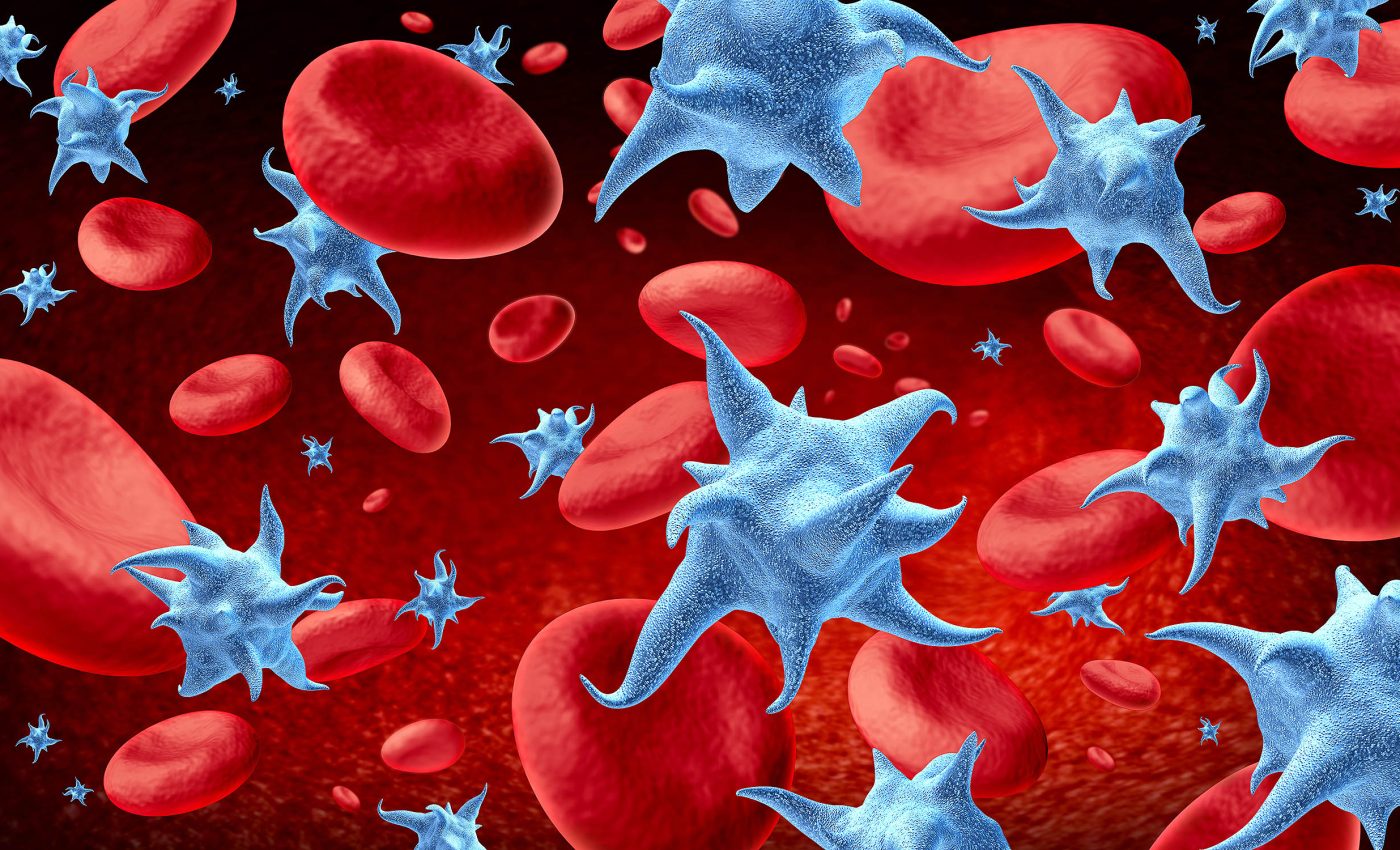
Blood platelets play a critically important role in the body that was unknown until now
Tiny structures in our blood called platelets are best known for helping to stop the bleeding after we get a cut or a scrape, but that is only part of the story.
A new study reports that platelets collect bits of DNA that float around in the blood and may help the body keep inflammation in check, while also offering a fresh source of genetic clues for disease detection.
Those fragments include cell-free DNA from tumors and from a fetus during pregnancy.
Early cancer screens often struggle because circulating tumor DNA is scarce, especially when disease is small, so tapping platelet cargo could raise the signal when it counts most.
Blood platelets clean up trash
This work was led by Bethan Psaila at Ludwig Institute for Cancer Research, University of Oxford, with first author Lauren Murphy, working with collaborators across Oxford and the University of Edinburgh.
Platelets lack a nucleus, yet they are laced with an internal network of surface connected channels known as the open canalicular system, which helps them take up and release molecules as they circulate.
That architecture makes them well suited to encounter DNA fragments shed by cells throughout the body.
They’re also abundant, with a normal adult count of roughly 150,000 to 450,000 per microliter of blood, and they turn over quickly in about a week.
That constant traffic gives platelets countless chances each day to sample what the body is shedding.
Platelets absorb tumor and fetal DNA
“We found that, despite lacking a nucleus, platelets contained a repertoire of DNA fragments mapping across the nuclear genome,” wrote Murphy.
The researchers tracked DNA moving from nucleated cells into platelets in lab co-cultures and then looked for the same phenomenon in people.
They examined platelets from pregnant individuals and detected Y chromosome DNA when the fetus was male, confirming fetal DNA uptake in maternal platelets.
In mice and in patients with very low platelet counts, plasma cell-free DNA rose, a pattern consistent with platelets normally helping clear that DNA from circulation.
The group also found tumor derived mutations inside platelets from people with advanced cancers and even from those with precancerous colonic polyps. That last result points straight at early detection opportunities where today’s tests fall short.
How blood platelets fight cancer
Today’s liquid biopsy tests usually analyze DNA floating in plasma after cells, including platelets, are removed, which means a chunk of useful information may be discarded at the very first step.
If labs analyze DNA within platelets as well, they could detect low-burden disease that plasma-based methods often overlook.
Prior work already hinted that platelets act as messengers for cancer biology.
Researchers showed that tumor educated platelets carry altered RNA profiles that can classify tumor types and key mutations, proof that these cells can encode disease signals in their cargo.
The new paper extends that idea to DNA and positions platelets as a second reservoir of genomic material.
Big boost for prenatal screening
Noninvasive prenatal testing built on maternal plasma cell-free DNA has already reshaped obstetric care over the past decade.
One review called this shift “a success story of modern genomic medicine,” noting rapid global adoption and clinical impact.
Sequencing cell-free DNA in maternal plasma now reduces invasive procedures such as amniocentesis by an estimated 50 to 70 percent worldwide, according to recent analyses of clinical practice.
If platelets also harbor fetal DNA, as the Science study shows, laboratories may be able to extract more information from the same blood draw.
Any gains would be most valuable where signal is weakest, such as early gestation or in individuals with lower fetal DNA fractions.
Platelet based workflows will need careful controls to avoid contamination and to normalize for platelet counts and activation states, but the path is clear for method development.
Aiding immunity and inflammation
Platelets are not bystanders in immunity. They sense pathogens, interact with white blood cells, and influence inflammation, a role recognized across cardiovascular and infectious disease research.
That biology helps explain the new findings. When platelet numbers drop, thrombocytopenia can coincide with higher levels of cell-free DNA, which is known to stimulate immune pathways; when numbers are normal, platelets may help buffer that stimulus.
The team also observed that platelet encapsulated DNA is shielded from external DNases (enzymes that degrade DNA by hydrolyzing the phosphodiester bonds in the DNA backbone), suggesting a protected, controlled cargo rather than debris.
Taken together, the picture is of a blood cell that patrols widely, picks up DNA fragments, and releases contents when activated at the right place.
That’s a plausible way to limit background inflammation while still enabling targeted responses at sites of injury or infection.
Blood platelets and future health
The technical work is now straightforward in concept but demanding in practice.
Labs will need robust protocols for platelet isolation, DNA extraction, and bioinformatic filtering that distinguish platelet encapsulated sequences from plasma contaminants, all while keeping pre analytical variables tight across sites.
Clinical trials must show added value over existing plasma tests. That means head to head comparisons in screening cohorts with adjudicated outcomes and clear metrics like sensitivity at fixed specificity in stage I cancers or low fetal fraction pregnancies.
None of this diminishes the central insight. Platelets may be more than clot makers and immune sentinels, they could be practical, easy to isolate biosensors that carry DNA signals from across the body, ready to be read out in a standard blood draw.
The full study is published in the journal Science.
—–
Like what you read? Subscribe to our newsletter for engaging articles, exclusive content, and the latest updates.
Check us out on EarthSnap, a free app brought to you by Eric Ralls and Earth.com.
—–













